July 2025
Walsh-Fluor Design-Build Team Celebrates Opening of Four New Red Line Stations as Part of CTA’s Red Purple Modernization Phase One Project
CHICAGO, IL – The Walsh-Fluor Design-Build Team proudly joined the Chicago Transit Authority (CTA) in celebrating the grand opening of the new Lawrence, Argyle, Berwyn, and Bryn Mawr Red Line stations, a major milestone in the $2.1 billion Red Purple Modernization (RPM) Phase One Project.
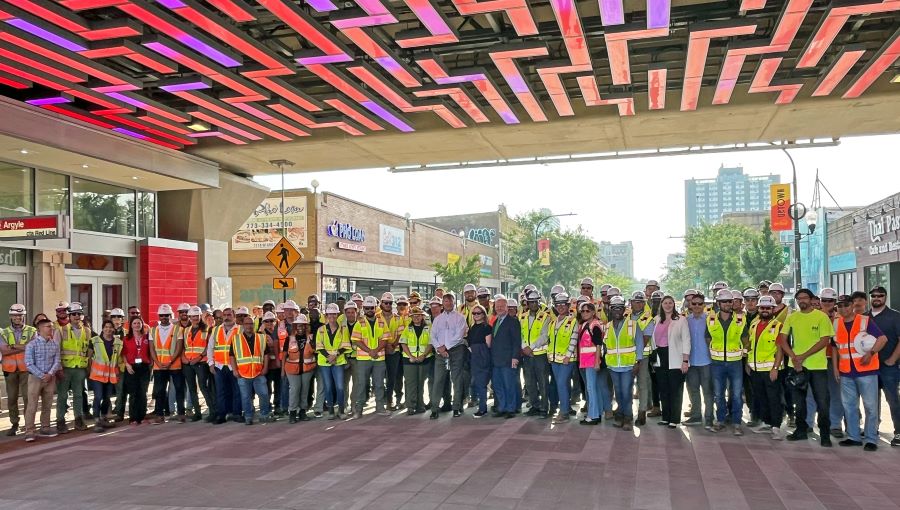
These newly rebuilt, fully accessible stations replace century-old infrastructure and reflect the one of the largest capital investments in CTA history. The openings mark the successful reconstruction of 1.3 miles of elevated track structure between Lawrence and Bryn Mawr, as well as major upgrades to bridges, viaducts, and systems, ultimately delivering faster, safer, and more reliable service for CTA riders.
“The opening of four Red Line stations and new track structure is more than a construction milestone, it’s a symbol of progress for Chicago’s transit and neighborhoods,” said David Shier, project executive for the Walsh-Fluor Design-Build Team. “We’re proud to deliver efficient, durable infrastructure that will serve the city for generations. This was all made possible by the ability and dedication of our skilled workforce, project management and project partners.”
The Walsh-Fluor Design-Build Team is led by Walsh Construction and Fluor Corporation as joint venture partners, with lead designer Stantec and major subconsultant designers EXP, International Bridge Technologies and Atlas Technical Consultants.
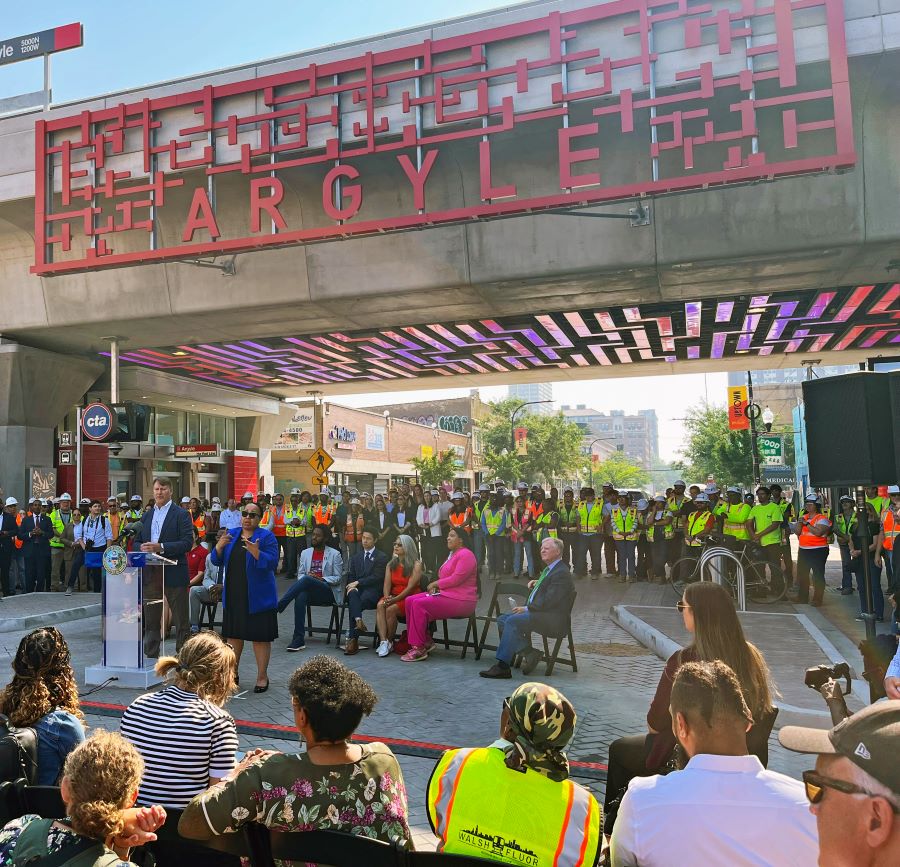
Delivering Accessibility, Modernization, and Resilience
Each new station offers a significantly improved customer experience with:
• Elevators and escalators at main entrances.
• Wider platforms for improved comfort and safety.
• Translucent overhead canopies for weather protection.
• Upgraded signage, equipment and seating.
As part of this transition, the temporary Argyle and Bryn Mawr stations currently serving customers during construction have permanently closed and will be demolished.
The Walsh-Fluor Design-Build Team also completed 1.9 miles of new elevated track structure, constructed to meet modern clearance standards and eliminate center-street columns, resulting in improved sightlines for pedestrians and motorists. The new structure replaces deteriorated viaducts and embankments that dated back to the early 1900s.
Additionally, a new signal system, spanning 23 track miles between Howard and Belmont, has replaced a 60-year-old system. This new system will improve train spacing and reliability, contributing to smoother operations systemwide.
“We are proud to be part of the on-time delivery of this iconic project that modernizes a nearly century-old transit system for the citizens of Chicago,” said Shawn West, President of Fluor’s Infrastructure business. “This project will not only boost economic growth and strengthen communities but allow CTA to create capacity and provide more reliable service for decades to come.”
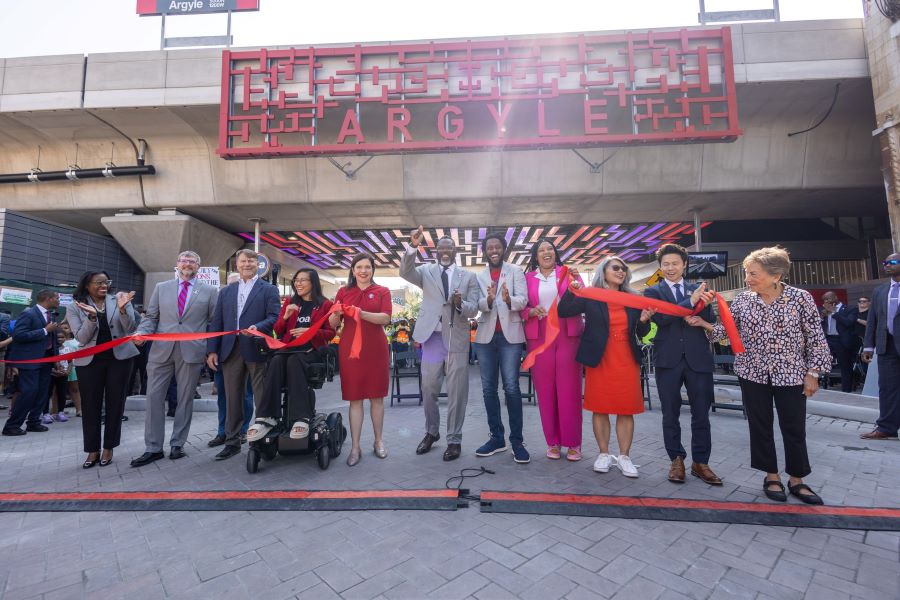
(Image credit: Chicago Transit Authority)
Engineering in Motion: Innovation in a Tight Urban Corridor
Delivering these improvements within one of Chicago’s most constrained transit corridors required innovation and precision:
• The Walsh-Fluor Design-Build Team deployed a custom 285-foot overhead gantry crane, named the “Windy City Gantry,” to install precast concrete segments from above, minimizing surface disruption.
• A 55-ton Mi-Jack rubber-tired gantry was also used to support top-down construction methods in spaces with as little as six inches of lateral clearance from adjacent buildings.
• Construction sequencing minimized service impacts while maximizing safety and efficiency for workers and the public.
In a blend of preservation and progress, the historic Vautravers Building, a 127-year-old greystone, was shifted approximately 30 feet west to allow for a straighter track alignment while maintaining a cherished architectural landmark.
“Transformational projects like this are complex and required a village of dedicated and passionate team members from our engineering team in collaboration with our contractor partners and the CTA,” said Dena Abakumov, transit and rail sector lead at Stantec. “Delivering this project in a dense urban environment required our teams to bring forward new ideas to put the community experience at the forefront of our design, and to support Walsh-Flour and CTA to minimize disruptions to the community.”
Another key element of Phase One is the Red-Purple Bypass, completed in 2021, which eliminated a critical bottleneck at Clark Junction where Red, Purple, and Brown Line trains previously intersected at grade. The bypass now allows Red Line trains to flow freely under northbound Brown Line service on the Bypass, improving reliability and enabling more trains to run during peak service.
Beyond Transit: Reclaiming Public Space
With structural demolition complete, CTA is preparing for the next chapter of RPM Phase One: transforming the area beneath the elevated tracks. The “Under L” project, led by CTA and informed by community feedback, will revitalize 10 blocks between Lawrence and Ardmore. Construction of this public realm is expected to begin in 2026 and be completed in 2027.
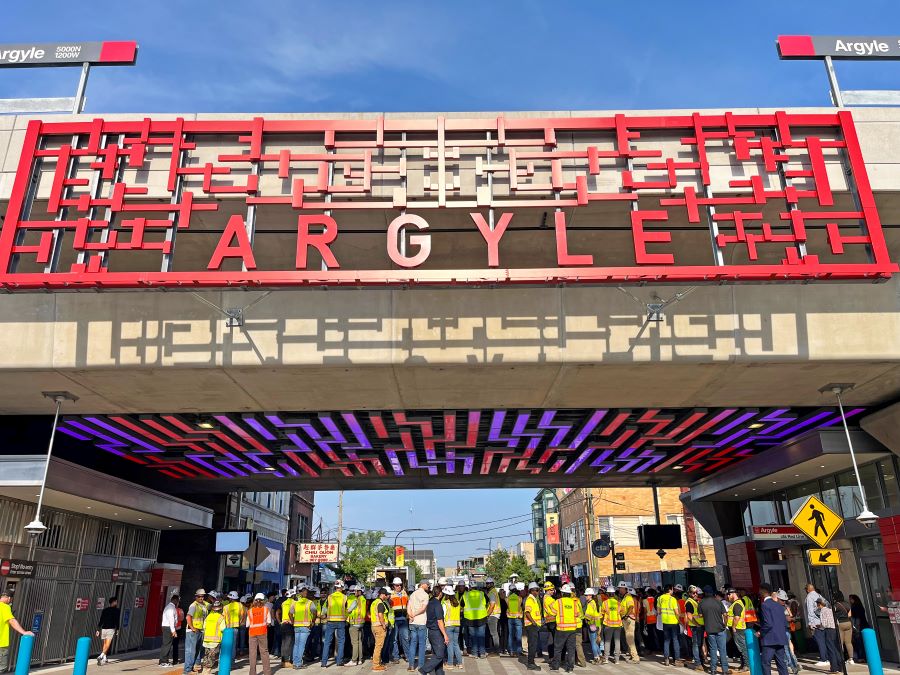
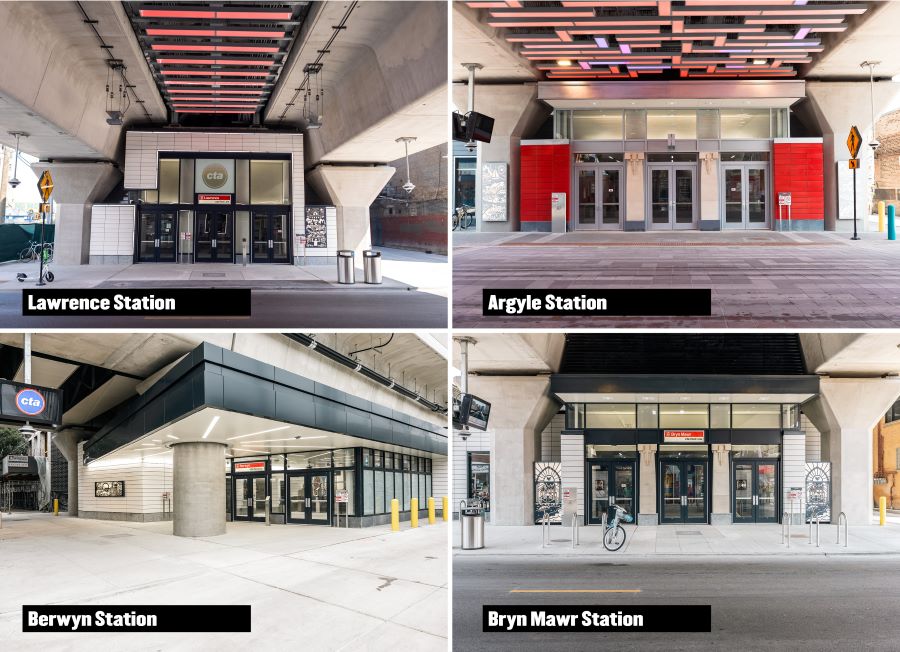
About RPM Phase One
Construction for RPM Phase One began in 2019 and includes:
• Rebuilding four Red Line stations (Lawrence, Argyle, Berwyn, and Bryn Mawr)
• Replacing six miles of track structure
• Constructing the Red-Purple Bypass (completed in 2021) to increase train capacity and reduce delays
• Installing a new signal system across 23 track miles
The CTA’s RPM Program will ultimately rebuild a 9.6-mile stretch of Red and Purple Line infrastructure on Chicago’s North Side, improving capacity and comfort for millions of riders. The Red Line is CTA’s busiest, carrying nearly 40 million rides in 2024.
For more information on the Red Purple Modernization Program, visit: www.transitchicago.com/RPM